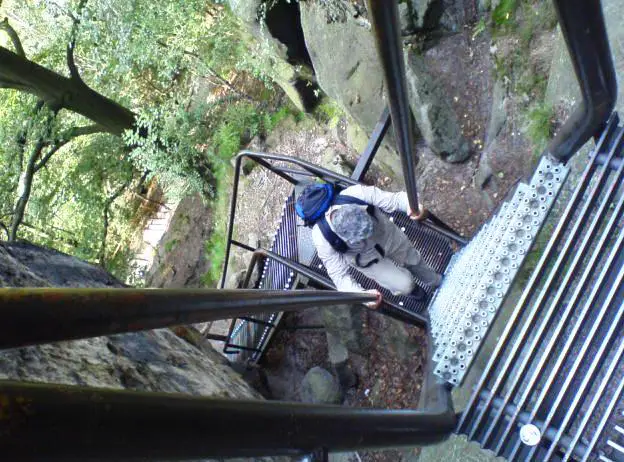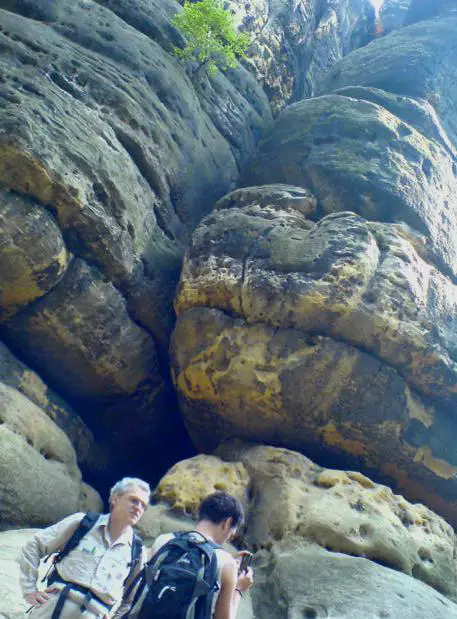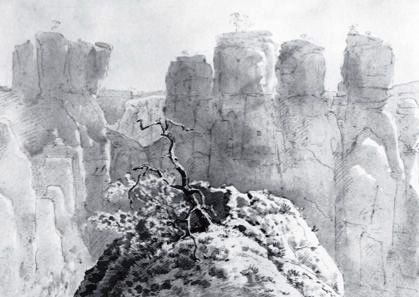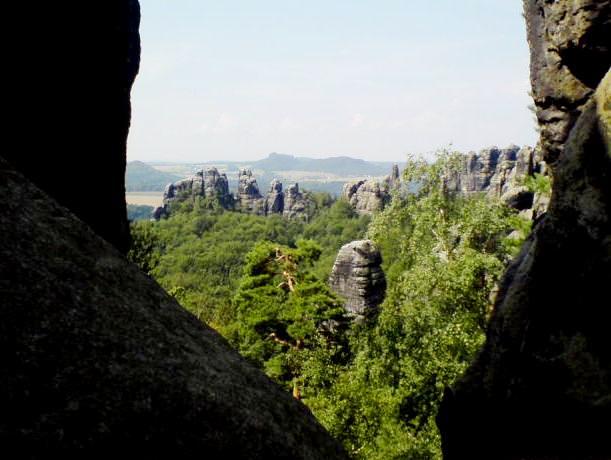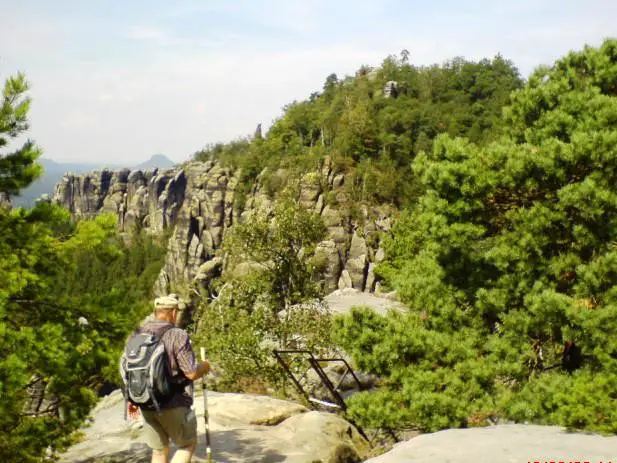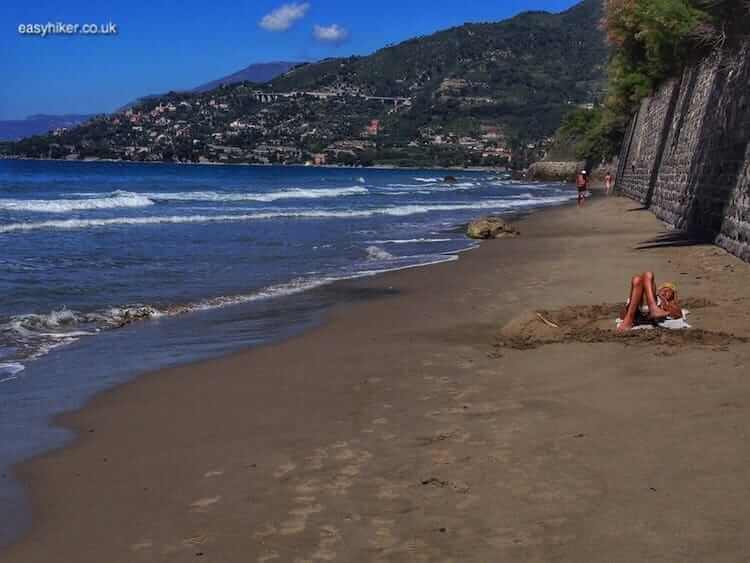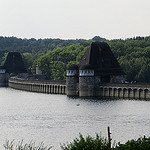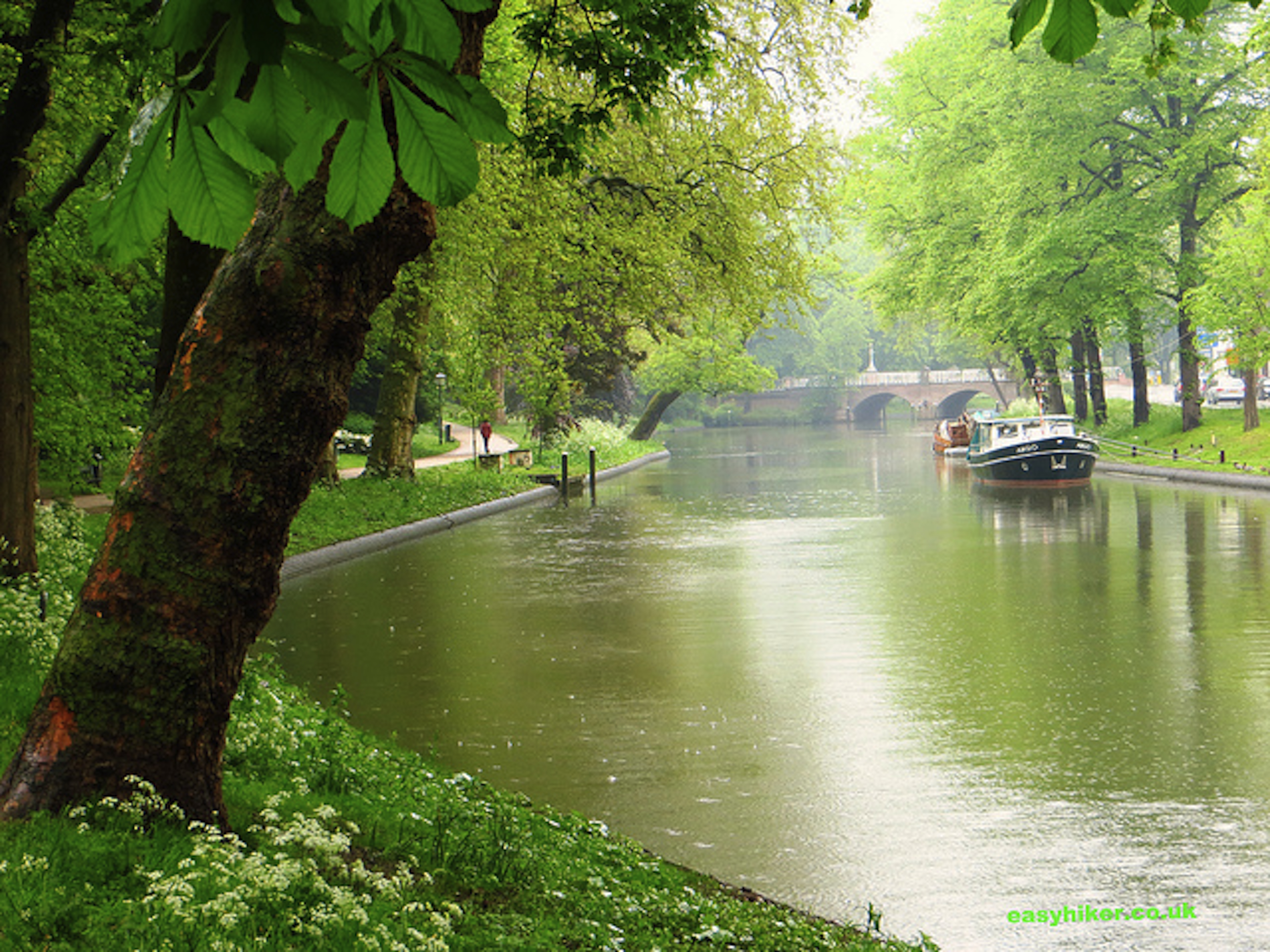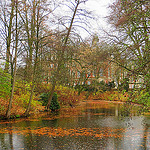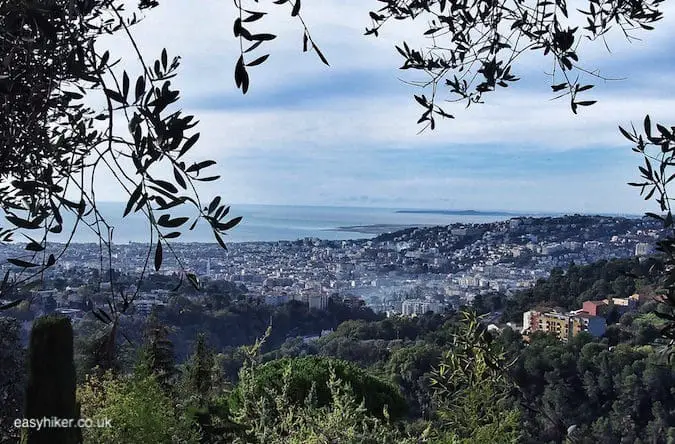Hiking in Germany
The Malerweg
Trail
The Malerweg, 8 stages of altogether 112 km in east Germany. This hiking trail for painters follows the Elbe eastwards (upstream) from Pirna to Schmilka (at the German-Czech border) where it crosses the river and leads you all the way back to Pirna on the left bank.
Profile
Malerweg means Painters’ Route, and the trail, unsurprisingly, is strong on picturesque views. The area was quite popular with the “early romantic” painters at a time – the late 18th century – when more than just a short plane ride separated large towns such as Berlin, Leipzig and Dresden from faraway sceneries that were famous for their dramatic vistas (such as the Alps, for example).
The Elbsandsteingebirge north of the Elbe river, conversely, was relatively near-by and offered itself as a convenient stand-in for places like Switzerland and Italy. The local scenery on these romantic paintings always looks grandiose and monumental, whereas in reality, it is perhaps a little less so, more quaint than truly intimidating – few mountains are more than 500 meters high. But you get the idea, and it would be unfair to call it a complete fantasy.
Most of the painters the Malerweg is meant to have inspired are fairly obscure, but you may have seen something by Caspar David Friedrich. His signature piece, The Wanderer Above The Mist, gives you a pretty good idea of his style.
The core of the Malerweg in Germany is the 35 km stretch from Watzdorf (roughly the halfway point of stage 3) to Schmilka (the end of Stage 5) through the National Park of “Saxon Switzerland” (which is how the area is also known).
The back leg – on the left bank – appears to be less popular, but it has some highlights, too, such as Königstein Castle (Stage 7).
What we did
Stage 4 from Altendorf to the Lichtenhain waterfall where we cut it short and went back to Schandau. on the (highly touristy) Kirnitzschbahn trolley bus. That seemed a fitting way to end the day – since we were only visitors on the Malerweg, mere day hikers, which is why we had not even brought a proper backpack. And great fun it was, too, for a change.
What we liked
Nearly everything, quite frankly. There is quite a lot to see along the hiking trail, the landscape changes fairly frequently, and the rocks are more impressive than their modest height may suggest.
The Schrammsteine cliffs in particular are great, and we really felt like adventurers climbing the ladders and iron stairways the park administration has provided to make it easier to get around.
Now they make a lot of noise of how you should be an experienced hiker and not suffer from vertigo before you attack these somewhat tricky parts of the trail. Do not let that scare you away: the El Camino del Rey this is not.
Frau Easy Hiker is far from an Olympic athlete, and she survived the experience. As did I, although heights scare the living daylight out of me.
The Elbsandsteingebirge also gave the 19th century German author (and notorious impostor) Karl May the ideas for his cowboy stories. He claimed to have been a famous trapper – known as “Old Shatterhand” – in North America, but in truth, the Schrammsteine were the closest he ever got to the real Wild West.
The individual stages are short (stage 4 with 17.6 km is the longest of the lot), and the overall trail is short, too. You can come, hike leisurely, add a couple of day trips in the area and have a great fortnight.
The local tourism office has published a Sammelkarte, a series of maps that feature the paintings which have been inspired by each individual stage.
These maps are only available at shops in towns along that particular stage. (The main motive for stage 4 was Blick zur Kleinen Gans by Carl Gustaf Carus from 1827, and not only was it easy to spot, it still looks like that, amazingly, with the same lone tree on the same rocky mountain top.)
The star of the collection is Pirna’s marketplace which was painted by Canaletto, but the most famous motive of the whole trail is one you won’t find: Caspar David Friedrich’s Wanderer (see above) combines different elements of the local landscape into a single composite view. (The most immediately recognizable of those is the Zirkelstein table mountain or mesa, which features along Stage 6 where you get a view of it across the Elbe.)
What we liked less
The Malerweg, it must be said, is remote, tucked away into the far eastern corner of Germany. Not that it is difficult to get to, there is an excellent train service, but it takes time.
We also could not help wondering why the Malerweg has not received more acclaim from the two associations which award certificates for German high-quality hiking trails, the Deutscher Wanderverband and the Deutsches Wanderinstitut.
Based on what we saw, the Malerweg should be up there with the Rheinsteig and the Westweg as one of the Germany’s major hiking attractions. Why isn’t it then? That we can only guess.
The markings of this hiking trail for painters, admittedly, are not quite as good and as frequent as on some of the certified trails. But one suspects that the trail may have other shortcomings once it leaves the confines of the National Park and may fail to meet at least one of the strict quality criteria (regular changes in formation, no busy roads, at most 10 percent on asphalt lanes or past “intensively used agricultural fields”).
Towns to explore
Bad Schandau, where we had our holiday flat, is the tourism centre of the area: a pretty little town, not at all like the rest of East Germany which can be a little, well, dowdy.
The train station is on the other side of the Elbe river and connected to the town centre by a ferry service which adds the spice of the unusual to every trip out of town. Bad Schandau is surrounded by a dense network of short and easy walks, a network that has been assembled – one suspects – mainly for the town’s predominantly elderly visitors.
The Wider Scene
This is an area which most of us will not visit over and over again in our lives, so you should make the best of it. There is a lot to see: Dresden, although a little overhyped, is well worth a day trip.
But you should, under no circumstances, miss the opportunity of travelling into the Czech Republic.
The Czech Republic is now part of NATO and the EU, but was once stashed away behind the Iron Curtain, of course, and it still feels exotic, mostly because of the language.
While you are never totally clueless in Western Europe – there is always a way of roughly deciphering texts in Dutch-German or French-Italian-Spanish – Slav languages are mysterious things, halfway to Chinese or Finnish, with funny little roofs, hats and ubiquitous accents over their letters.
In between shops and street signs, I always feel a little queasy as though I had dropped into some sort of spy movie.
Decin is the nearest Czech town (30 minutes by train, hourly service), but there are also many offers for day trips to Prague. (By train, the journey would take you about 2 hours.)
How to get there
Dresden (40 minutes away by regional train, regular service with several trains per hour) has an international airport, albeit one which is served by a limited number of destinations. Trains from Bad Schandau to Berlin, the nearest major hub, take nearly three hours.
More information
The Malerweg in Germany has its own website HERE.


